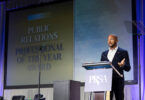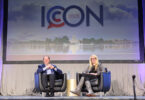In August, PRSA is celebrating Diversity Month by focusing on the diverse communities, people and practices that comprise public relations. We will also be providing advice and insight on how to build a better PR profession through diversity and inclusion. Here, the Diversity & Inclusion Committee and other PR thought leaders offer their insights on the importance of a diverse and inclusive workplace. Join the discussion by following @PRSADiversity and using #PRSADiversity in your social media posts.
Diversity of thought in inclusive environments brings value to organizations ranging from publicly traded conglomerates to nonprofit agencies. However, when it comes to implementing and integrating diversity, inclusion strategies and initiatives, organizations sometimes come up short. Often, implicit bias is the culprit in this apparent disconnect.
Implicit bias refers to attitudes that affect our understanding, actions and decisions in an unconscious manner, according to the Kirwin Institute for the Study of Race and Ethnicity at The Ohio State University. Such biases often lead to either favorable or unfavorable assessments of others. Negative assessments based on race, gender, ethnicity, sexual orientation or gender identity, or any other real or perceived difference can have dire implications in hiring, promotion, team assignments and performance evaluation.
Leaders in both the for-profit and nonprofit sectors are increasingly seeking to understand and address such implications of implicit bias. In fact, more than half of the 18 CEOs of PR firms interviewed by Angela Chitkara for a 2017 City College of New York and Holmes Report paper, which was presented in a PRSA Diversity and Inclusion webinar, indicated they have implemented implicit bias training as a best business practice in an effort to retain diverse employees.
For the PR profession, overcoming obstacles to the incorporation of diversity and inclusion is imperative. Having a range of backgrounds and worldviews among PR practitioners is especially valuable in a creative, idea-driven industry that seeks to influence behavior, opinions and attitudes impacting nearly every segment of global society.
Research reveals how a broad mix of viewpoints, life experiences and thought — achieved through a diverse workforce — has significant positive impact on market performance, strategy development and other core drivers of organizational effectiveness. According to the 2009 piece “Diversity Linked To Increased Sales Revenue And Profits, More Customers” in the American Sociological Review, diverse hiring is seen to have a direct correlation to improved financial performance. Conversely, undesired consequences can emerge when employees believe their ability to advance in an organization is hindered by bias on the part of their superiors, co-workers or clients.
Disrupt Bias, Drive Value, a 2017 Center for Talent Innovation survey, found that professionals at large companies who feel stymied by bias may face burnout, make plans to leave, are critical of their companies and, in recent months, chose not to complete key job tasks. The CTI study identifies diverse leadership as one antidote to bias.
With more diverse leadership in senior level positions, according to CTI, employees of large companies were 64 percent less likely to perceive bias and 19 percent more likely to be engaged; employees with inclusive team leaders were 87 percent less likely to perceive bias and 39 percent more likely to be engaged; diverse employees with sponsors— people who help them maneuver through bias — were fully 90 percent less likely to perceive bias and 21 percent more likely to be engaged.
To create a profession with the most representative scope of talent — as well as one that reflects PRSA’s own strategic value to increase the diversity of its membership — it is incumbent on PR hiring managers to fill open positions and make promotions with diversity and inclusion at top of mind. More important, PRSA members are invited to “take a look in the mirror” to assess the state of their own implicit bias by taking action to address it.
To take a quick look at your own implicit bias potential, we suggest Harvard University’s 10-minute Implicit Association Test (IAT).
Co-authored by Anthony Hicks, APR, and Jaron Terry, APR, Fellow PRSA, who serve together on PRSA’s National Diversity and Inclusion Committee. Hicks is director of public relations, Shelby Residential & Vocational Services, in Memphis, Tennessee. Terry is president, Jaron Terry Communications, serving clients in Central Ohio, and is adjunct faculty, Franklin University, where she teaches crisis communications.








I’m 100 percent with you on connecting early with high school students.